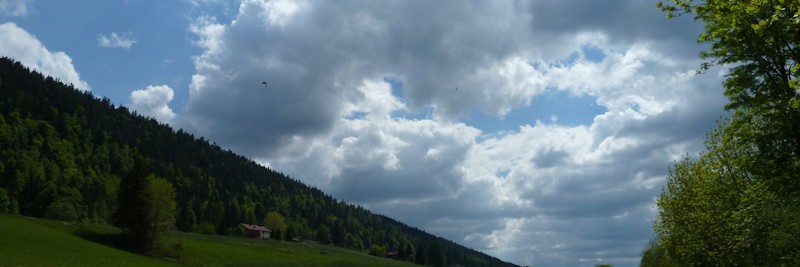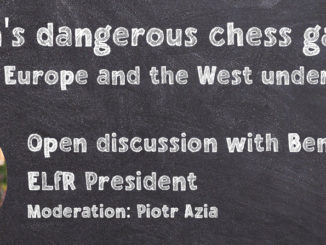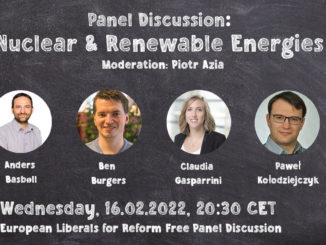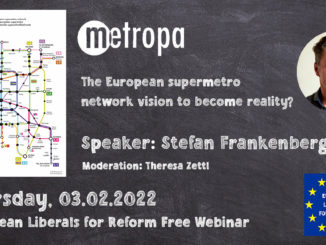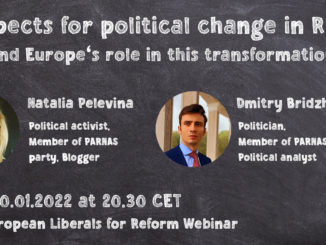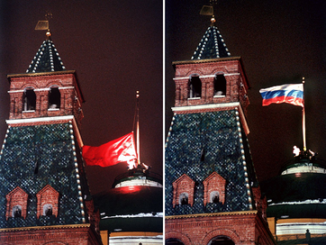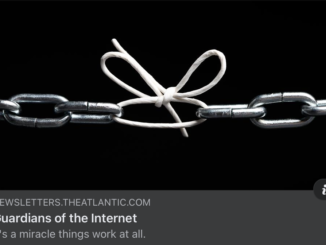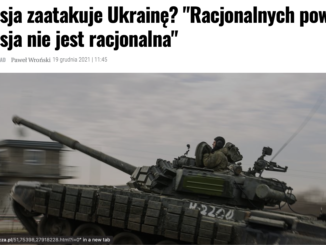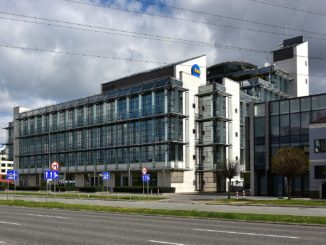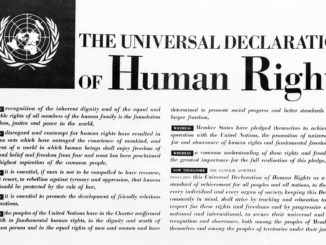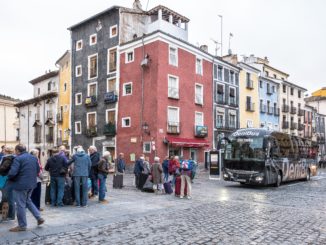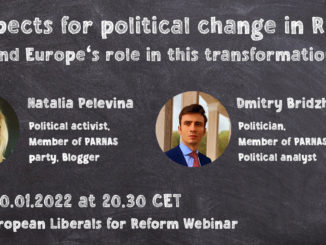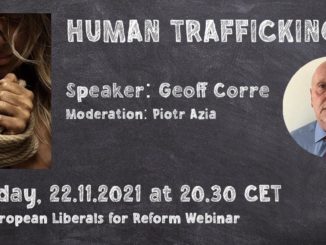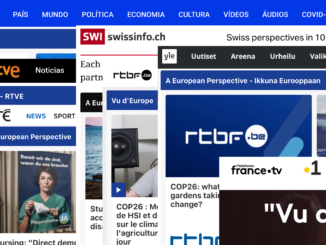
The numbers

| Oil and petroleum products | 34.5% |
| Natural gas | 23.7% |
| Renewables | 17.4% |
| Nuclear | 12.7% |
| Solid fossil fuels (mostly coal) | 10.5% |
| Other | 1.2% |
What’s striking is the strong presence of fossil fuels in the mix: two thirds of the total, including coal, which was supposed to have been abandoned by now. Renewables and nuclear together barely reach 20.9%.
But what’s not just striking, but deeply worrying is the origin of the fossil mix: Our gas dependency on Russia is 41%, oil 27%, coal 47%, with the overall total dependency being 24.4%.
The consequences
Our energy dependency on Russia is a shade under a quarter of the total of the EU’s energy mix, but at the moment difficult to replace, with oil and gas markets under pressure. Oil and gas producers cannot raise their output at short notice and, when spare capacities can be found, pipeline capacity not originating in Russia is limited, with LNG transporters and oil tankers scarce and expensive, at the moment.


But after finding the LNG and chartering the scarce ankers, our problems don’t end there: Germany, the biggest economy in Europe, doesn’t have a single LNG regasifying facility, same for Italy. Within the EU, only Spain and Portugal have spare capacity left. However, use of the Iberian peninsula facilities wouldn’t be a solution to our problem, because of insufficient gas pipeline interconnections between the Iberian peninsula and the rest of the continent: the existing pipeline through the western Pyrenees with France is already working at capacity and the planned pipeline through Catalonia, was abandoned years ago, due to a lack of interest – and funds.
Europe ended up by staking it all on Russia – knowing full well that it would use its gas and oil weapon, as in the past, according to its geopolitical aims. Russia already cut supply of gas to Europe in January 2006, because of a dispute with Ukraine, accused of stealing natural gas transiting through its territory. To obviate it, Germany made a direct deal with Russia, resulting in the building of Nordstream, routed under the Baltic, thus bypassing Ukraine and Poland, as it ends up directly in Germany. Not content, Germany and Russia contracted the construction of Nordstream 2, following a similar route, cutting out the central European neighbours, guaranteeing an uninterrupted flow of Russian gas to the biggest economy in Europe – assuming that nothing could ever perturb the special relationship between Russia and Germany, built over decades. Ostpolitik, initiated in 1969 by chancellor Brandt, when Germany and Russia made their first gas deals, with Germany providing high quality steel pipes used to build the pipelines, with Russia paying with supplies of oil and gas.
The late US Sen. John McCain called “Russia … a gas station masquerading as a country” – with another version: “Russia … a gas station with nukes” – harsh, but not too far from the reality of a country with little else to offer its own population the world.

If we take a look at global of oil production, Russia’s oil reserves are estimated at 107.8 thousand million barrels, with the biggest, Venezuela, at 303.8. Even if Russia decided to cut off supplies completely, we would have something to fall back on – the question being the amount of time and cost the replacement would require, with Europeans shivering, power blackouts and many factories requiring large amounts of gas, closed.
Renewables and nuclear – the (mostly) clean energies

By early 2020, 13 EU countries had nuclear energy generation, with the remaining 14 (Denmark, Estonia, Ireland, Greece, Croatia, Italy, Cyprus, Latvia, Lithuania, Luxembourg, Malta, Austria,Poland and Portugal) having no nuclear capacity.
The 13 members with nuclear capacity, generated 683 512 GWh of nuclear electricity, 25% of EU’s total electricity production.
| France | 67% |
| Slovakia | 54% |
| Hungary | 46% |
| Bulgaria | 41% |
| Belgium | 39% |
| Slovenia | 38% |
| Czechia | 37% |
| Finland | 34% |
| Sweden | 30% |
| Spain | 22% |
| Romania | 21% |
| Germany | 11% |
| Netherlands | 3% |
Conclusions
We have already looked at some of the problems involved with a probable cut in fossil fuel supplies from Russia – at the time of writing, mid-March 2022, more a question of when, rather than if.
We can’t identify easy solutions or recommendations, considering that even the simplest would require large investments and, above all time, something we don’t have as we find ourselves literally under the gun from our main supplier, who also happens to be an enemy of our democracies and a mortal threat for our physical survival.
IAEA proposal
In March IAEA published a timely report: “A 10-Point Plan to Reduce the European Union’s Reliance on Russian Natural Gas”
The salient points of the report:
- No new gas supply contracts with Russia
- Replace Russian supplies with gas from alternative sources
- Introduce minimum gas storage obligations to enhance market resilience
- Accelerate the deployment of new wind and solar projects
- Maximise generation from existing dispatchable low-emissions sources: bioenergy and nuclear
- Enact short-term measures to shelter vulnerable electricity consumers from high prices
- Speed up the replacement of gas boilers with heat pumps
- Accelerate energy efficiency improvements in buildings and industry
- Encourage a temporary thermostat adjustment by consumers
- Step up efforts to diversify and decarbonise sources of power system flexibility

More quotes, expanding on the bullet points above:
Power sector
In 2022, record additions of solar PV and wind power capacity and a return to average weather conditions are already expected to increase the EU’s output from these renewable sources by over 100 terawatt-hours (TWh), a rise of more than 15% compared with 2021.
A concerted policy effort to fast-track further renewable capacity additions could deliver another 20 TWh over the next year. Most of this would be utility-scale wind and solar PV [photo voltaic] projects for which completion dates could be brought forward by tackling delays with permitting [issuing permits].”
Faster deployment of rooftop solar PV systems can reduce consumer bills. A short-term grant programme covering 20% of installation costs could double the pace of investment (compared with the IEA’s base case forecast) at a cost of around EUR 3 billion. This would increase annual output from rooftop solar PV systems by up to 15 TWh.
“Impact: An additional 35 TWh of generation from new renewable projects over the next year, over and above the already anticipated growth from these sources, bringing down gas use by 6 bcm.”
Nuclear power is the largest source of low emissions electricity in the EU, but several reactors were taken offline for maintenance and safety checks in 2021. Returning these reactors to safe operations in 2022, alongside the start of commercial operations for the completed reactor in Finland, can lead to EU nuclear power generation increasing by up to 20 TWh in 2022.
A new round of reactor closures, however, would dent this recovery in output: four nuclear reactors are scheduled to shut down by the end of 2022, and another one in 2023. A temporary delay of these closures, conducted in a way that assures the plants’ safe operation, could cut EU gas demand by almost 1 bcm per month.
End-use sectors
Heat pumps offer a very efficient and cost-effective way to heat homes, replacing boilers that use gas or other fossil fuels. Speeding up anticipated deployment by doubling current EU installation rates of heat pumps would save an additional 2 bcm of gas use within the first year, requiring a total additional investment of EUR 15 billion…this is best combined with upgrades of the homes themselves to maximise energy efficiency gains and reduce overall costs.

As the IAEA report points out, we are not completely helpless when faced with the current crisis and, with swift and determined action, we could boost the European use of renewable energies, reducing durably the use of fossils, while freeing the EU from paying a heavy energy tribute to Russia, an unstable, unreliable, authoritarian provider, ready to manipulate supply and prices at will, to obtain its broader geopolitical aims, at the expense of the EU population and its democracy.
The most important thing we can do now is to move fast to compensate for the fast increase in the cost of fossil fuels and dependency on a sworn enemy to keep our economies working, food cooked and population warm – by differentiating our sources, saving energy where we can but, above all, staking it all on energy independence, the sooner, the better. That can only mean one thing: renewables, complemented by extending the life of the existing nuclear facilities. With the money we won’t spend on importing fossil fuels from Russia, we will be able to build countless wind power generators, solar panels on European roofs, gigabatteries, bio-methane recycling facilities, just to mention some of the many renewable energy sources – we just have to make a start, urgently.

The full report at: https://www.iea.org/reports/a-10-point-plan-to-reduce-the-european-unions-reliance-on-russian-natural-gas

